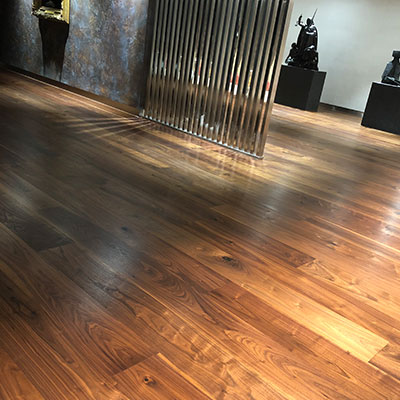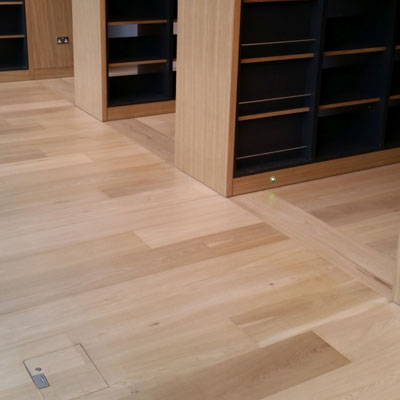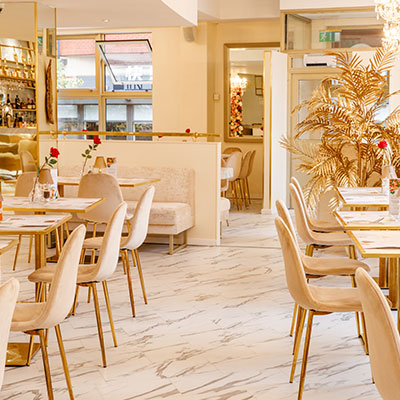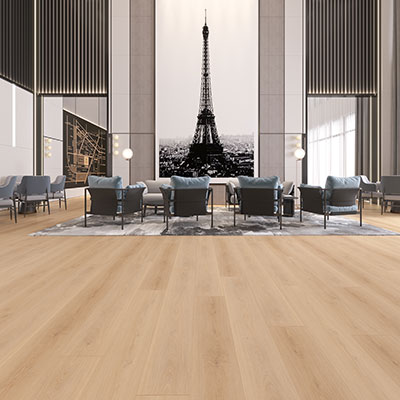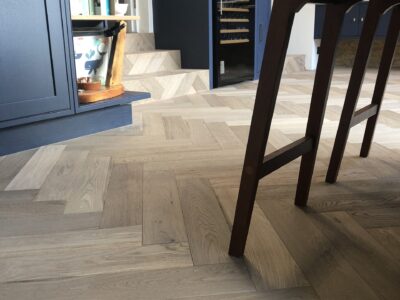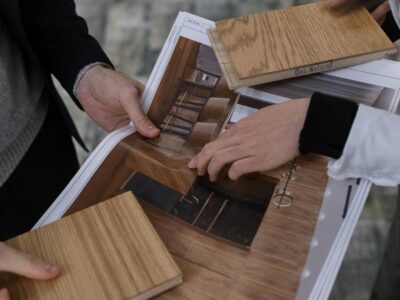
The Solid Wood Flooring Company
Commercial Wood Flooring
Maximise Your Space with Premium Commercial Wood Flooring Options.
Introduction to Commercial Wood Flooring
Commercial Wood flooring is used in restaurants, hotels, offices, bars, pubs, museums, schools, universities, in fact anywhere where a clean non allergic easily maintained floor is required. Carpets harbour mites, dust and allergens.
Importance of choosing the right flooring for businesses
The importance of choosing the right floor is crucial. It will depend on the interior design requirements of the client and the ambience being created. Very high traffic areas will need a hard wearing floor that cannot be easily damaged. In shops for example high heels can easily dent cheap floors so choosing the correct species of oak for example is more important than trying to get the cheapest option.
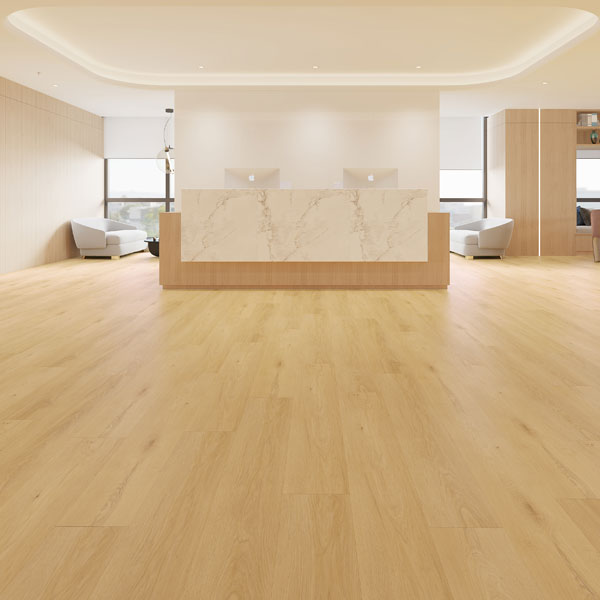
Sustainable wood flooring
We will only supply fully certified timber to make our engineered wood floors. Our floors will be FSC or PEFC certified. Sustainable wood flooring means that forest where logs are cut from are replanted with the same trees that are cut down. We have a commitment to plant 4 new oak trees for everyone we cut down.
Each of these types of wood flooring has distinct advantages and can be chosen based on factors like aesthetic preferences, environmental conditions, foot traffic, and budget considerations. Selecting the right type ensures a balance of functionality, durability, and style in a commercial setting.

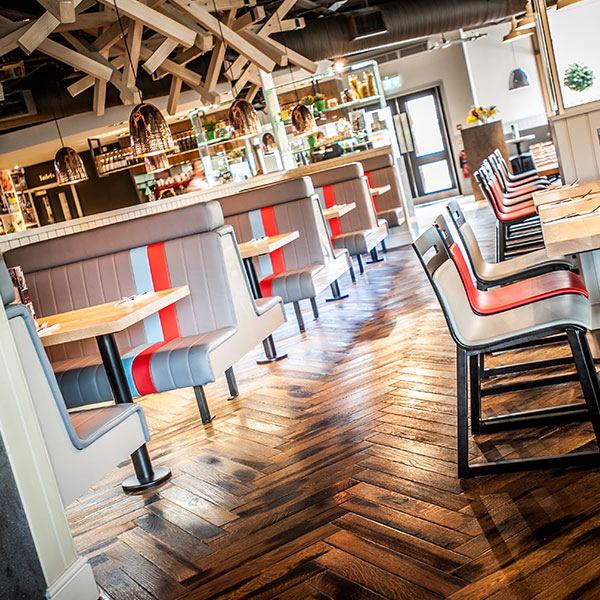
Benefits of Choosing Wood Flooring for Commercial Spaces
Aesthetic Appeal
Wood flooring is renowned for its timeless and elegant aesthetic, making it an ideal choice for commercial spaces. Its natural beauty and warmth can elevate the ambiance of any environment, from corporate offices to retail outlets. The versatility of wood flooring allows for a variety of design themes, be it classic, modern, or rustic. Each plank possesses unique grain patterns and hues, ensuring no two floors are exactly alike. This uniqueness contributes to creating an inviting and distinguished atmosphere, often enhancing the perceived value of the commercial space.
Durability and Longevity
One of the most compelling reasons to choose wood flooring for commercial spaces is its durability. Quality wood floors are built to withstand heavy foot traffic, making them a practical option for busy environments. Over time, wood flooring maintains its structural integrity and can last for decades, outperforming many synthetic alternatives. This longevity not only makes it a cost-effective flooring solution in the long term but also ensures that the space retains its aesthetic appeal without the need for frequent replacements or extensive repairs.
Easy Maintenance
Maintaining a pristine appearance in commercial spaces is crucial, and wood flooring offers ease of maintenance to meet this need. Regular sweeping and occasional mopping are generally sufficient to keep wood floors looking their best. Moreover, wood’s resistance to spills and stains, especially when properly sealed, makes it ideal for spaces where cleanliness is paramount. In the event of scratches or wear, wood flooring can be sanded and refinished rather than entirely replaced, further extending its life and reducing overall maintenance costs.
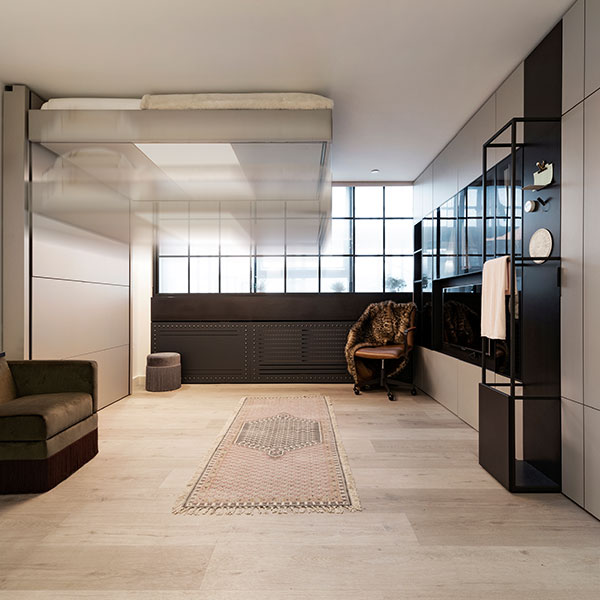
Environmental Impact
In today’s eco-conscious world, the environmental impact of building materials is a significant consideration. Wood flooring stands out as a sustainable option. Responsibly sourced wood flooring comes from renewable forests and has a lower carbon footprint compared to many synthetic flooring materials. The longevity of wood flooring also contributes to its environmental friendliness, as less frequent replacements mean reduced waste and resource consumption. Additionally, wood is a natural insulator, which can contribute to energy efficiency in commercial spaces, further reinforcing its eco-friendly credentials.
Considerations When Choosing Commercial Wood Flooring
Traffic and Wear Resistance
When selecting wood flooring for commercial spaces, it’s crucial to consider the level of foot traffic the area will experience. High-traffic areas such as retail stores, restaurants, or office buildings require more durable wood species and finishes that can withstand constant wear and tear. Hardwoods like oak, maple, or hickory are often preferred for their strength and ability to resist scratches and dents. Opting for a floor with a robust finish and a thicker wear layer can also enhance its durability, ensuring the flooring remains aesthetically pleasing and functional over time.
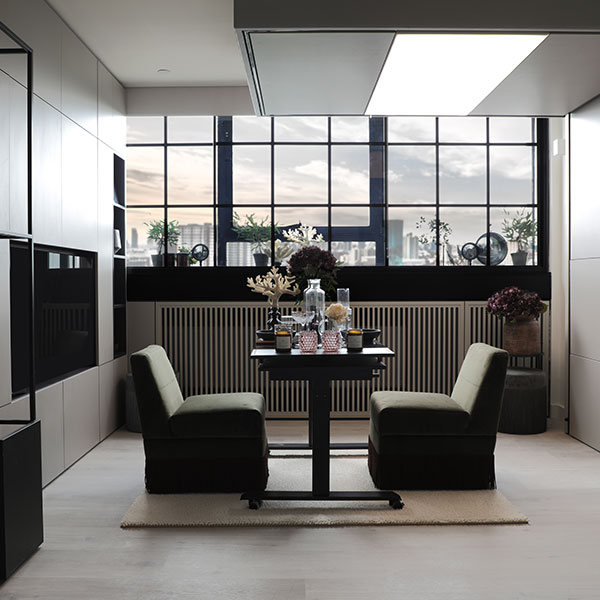
Moisture and Temperature Resistance
Wood flooring’s susceptibility to moisture and temperature changes is an important factor to consider in commercial settings. Environments exposed to high levels of humidity, or drastic temperature fluctuations require wood flooring that is less prone to warping or expanding. Engineered wood flooring, known for its stability in varying conditions, is often recommended for such spaces. Additionally, areas prone to spills or moisture, like kitchens or entryways, may need extra protective finishes or specific wood types known for their moisture resistance.
Installation and Maintenance Requirements
The ease of installation and maintenance requirements are vital considerations for commercial wood flooring. Time is often a constraint in commercial projects, making quick and efficient installation methods like floating floors or click-lock systems appealing options. Post-installation, the maintenance regime should align with the business’s operational capacity. While wood flooring generally requires minimal upkeep, it’s important to choose a type that suits the staff’s ability to regularly clean and maintain the floor, ensuring its longevity and continued appeal.
Budget and Cost-Effectiveness
Budget is a key factor in any commercial flooring decision. Wood flooring can vary significantly in price based on the type of wood, the complexity of the design, and the quality of the materials. While higher-end options may offer greater durability and aesthetic appeal, there are also cost-effective alternatives that can meet budgetary constraints without compromising too much on quality. It’s important to balance upfront costs with long-term value; investing in a slightly more expensive wood flooring might result in lower maintenance and replacement costs over time, proving more cost-effective in the long run.
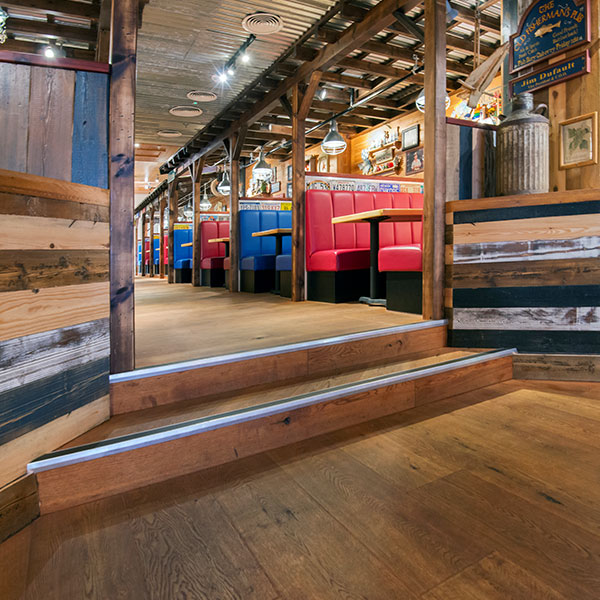
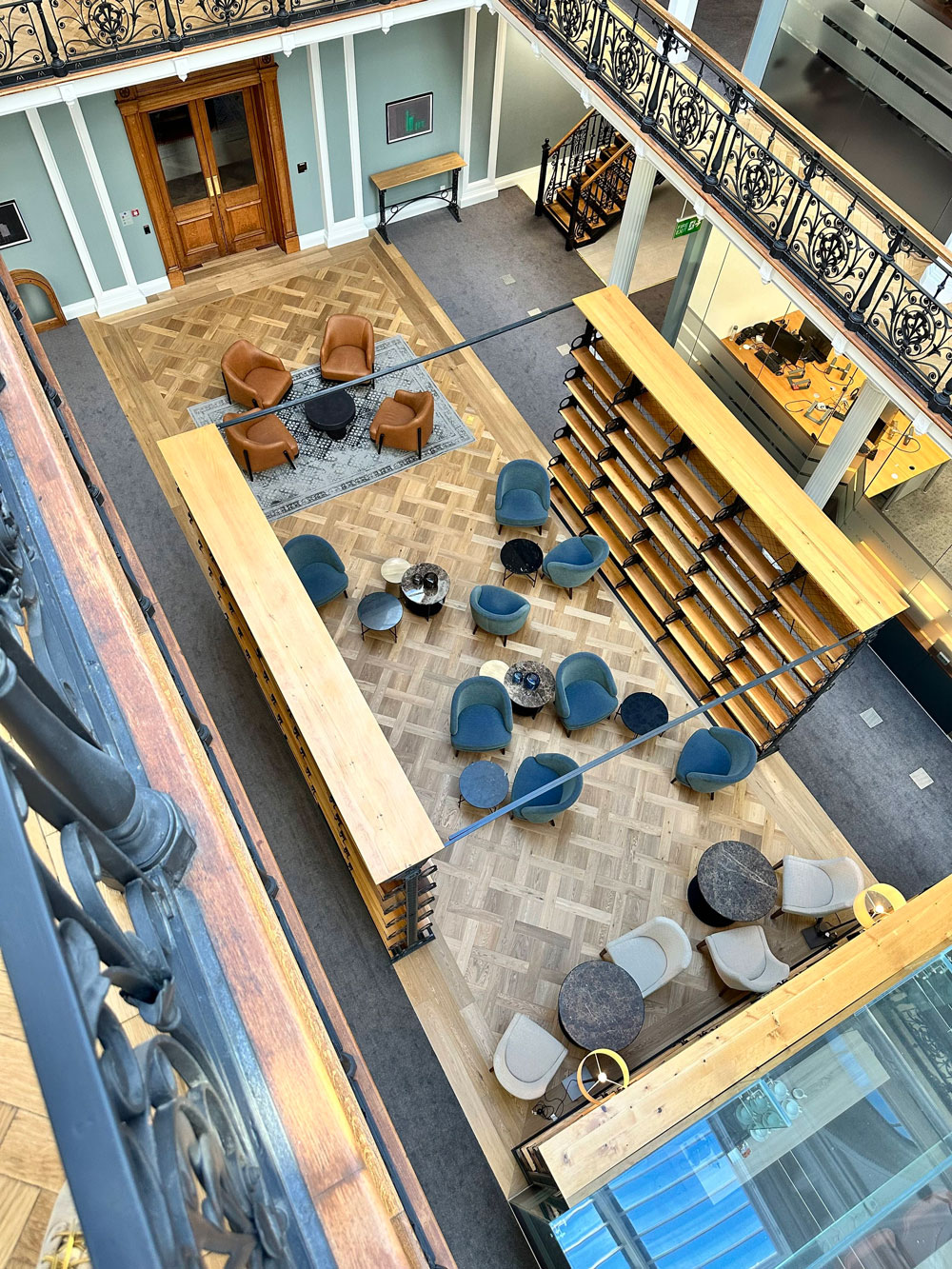
Popular Trends in Commercial Wood Flooring
Latest Styles and Colours
The world of commercial wood flooring is continually evolving, with current trends showcasing a blend of both classic and modern aesthetics. Among the latest styles, wider planks have gained popularity for their ability to create a sense of spaciousness and seamless elegance in commercial settings. In terms of colours, there’s a noticeable shift towards natural, earthy tones that offer a warm and inviting feel. Greys, whites, and light browns are particularly sought after, as they provide a neutral backdrop that complements various interior designs. High variation flooring, where planks exhibit a diverse range of tones and grains, is also on the rise, adding unique character and depth to commercial spaces.
Innovative Installation Patterns
Creative installation patterns are becoming a hallmark of contemporary commercial wood flooring. Beyond traditional straight planks, herringbone and chevron patterns are increasingly popular, offering a sophisticated and visually striking appearance. These patterns can be used to define different areas within a space or create focal points. Mixed-width and random plank arrangements are another innovative trend, adding a dynamic and customised look to the floor. These creative installation techniques not only enhance the aesthetic appeal of the space but also demonstrate a commitment to innovative design.
Eco-friendly and Sustainable Options
In response to growing environmental concerns, eco-friendly and sustainable wood flooring options are now at the forefront of commercial design trends. Reclaimed wood flooring is a popular choice, valued for its unique character and environmentally responsible nature. It repurposes old wood from barns, warehouses, and other structures, reducing waste and resource consumption. Additionally, the use of sustainably sourced wood, certified by organisations like the Forest Stewardship Council (FSC), is increasingly important. These options ensure that the wood is harvested responsibly without depleting natural resources. Moreover, finishes and adhesives with low volatile organic compound (VOC) emissions are being favoured to maintain indoor air quality, reflecting a comprehensive approach to eco-friendliness in commercial flooring.
Installation and Maintenance of Wood Flooring
Professional Installation Process
The installation of wood flooring is a task best entrusted to professionals to ensure optimal performance and longevity. A professional installation begins with assessing the space to determine the most suitable type of wood flooring, considering factors like humidity, temperature fluctuations, and foot traffic. The subfloor must be properly prepared to ensure it’s level, dry, and clean. Professionals will then choose the right installation method—be it floating, glueing, or nailing—based on the flooring type and the specific conditions of the space. It’s essential to allow for expansion gaps to accommodate natural wood movement. Lastly, the finishing touches, including sealing and treating the wood, are applied to protect the flooring and enhance its appearance.
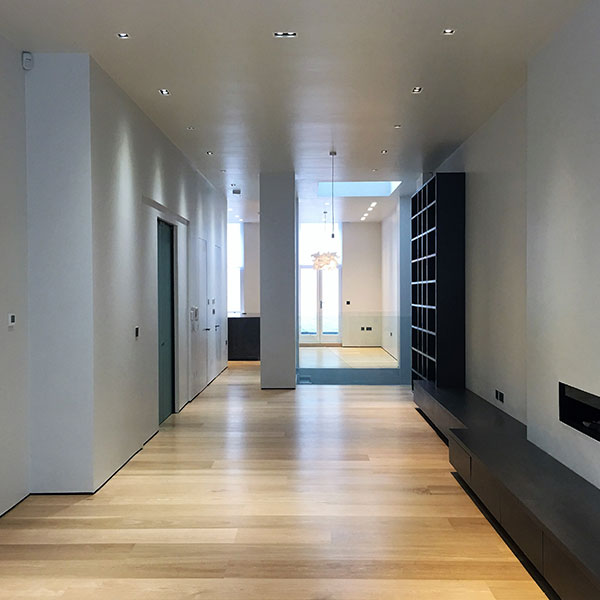
Daily and Long-term Maintenance Tips
For daily maintenance, sweeping or vacuuming is recommended to remove dust and debris. When mopping, use a slightly damp mop and a cleaner specifically designed for wood floors to avoid damaging the wood. Mats at entrances can help trap dirt and moisture from shoes, protecting the floor. For long-term care, periodic deep cleaning and polishing will maintain the floor’s shine and finish. It’s crucial to promptly address any spills to prevent water damage. Over time, consider reapplying finish or sealant to keep the wood protected and looking fresh.
Repair and Renovation Strategies
Wood flooring is prized for its ability to be repaired and renovated, extending its lifespan significantly. For minor scratches and dents, products like wood filler or colour-matching pencils can be used for quick fixes. More significant damage might require sanding down and refinishing the affected area or even the entire floor for a uniform look. In cases of severe damage, such as warped or cracked planks, individual boards can be replaced without needing to redo the entire flooring. For a complete renovation, sanding down the entire surface and applying a new finish can transform an aged wood floor, restoring its original beauty and character. It’s advisable to consult with flooring professionals to determine the best approach for repair and renovation based on the specific type and condition of the wood flooring.
Commercial wood flooring Frequently Asked Questions
Q. What is the most durable wood flooring for commercial use?
Hardwoods like oak, hickory, and maple are the most durable for commercial use due to their hardness and resistance to wear and tear.
Q. How do you maintain wood floors in high-traffic areas?
Regular sweeping and mopping with a wood floor cleaner, immediate cleaning of spills, and periodic refinishing are key to maintaining wood floors in high-traffic areas.
Q. Can commercial wood flooring be eco-friendly?
Yes, commercial wood flooring can be eco-friendly, especially when made from sustainably sourced or reclaimed wood and using low-VOC finishes and adhesives.
Q. What are the cost benefits of installing wood flooring in a business?
Wood flooring offers long-term savings due to its durability and longevity, reducing the need for frequent replacements. Its timeless appeal can also enhance property value.
Q. How does wood flooring impact the ambience of a commercial space?
Wood flooring adds warmth and elegance, creating a welcoming and professional atmosphere. Its natural look and feel can
Talk to our commercial wood flooring experts
Ready to elevate your space with stunning, durable wood flooring?
Discover the ideal solution at The Solid Wood Flooring Company, where quality meets elegance and longevity.
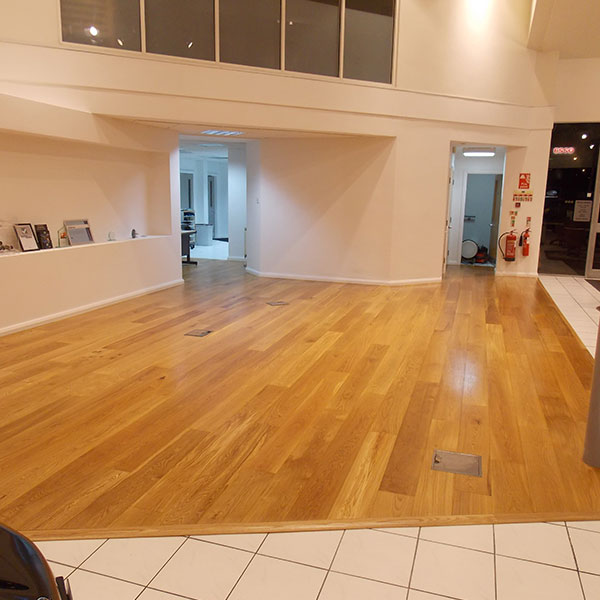
Sustainable Timber Flooring
We are very conscious of our environment and will only supply fully sustainable wood flooring. We are FSC® certified and PEFC™ certified. This section reviews our ethical code of conduct and provides links to our certifications. If you have any more questions on our Responsible Purchasing Policy please call us on 01666 504 015.
Get in touch
Questions or comments? If you can’t find the answer to your question on our site or want to leave some feedback, please fill in the form below.
Join our mailing list
Receive the latest news, offers and inspiration straight to your inbox.

